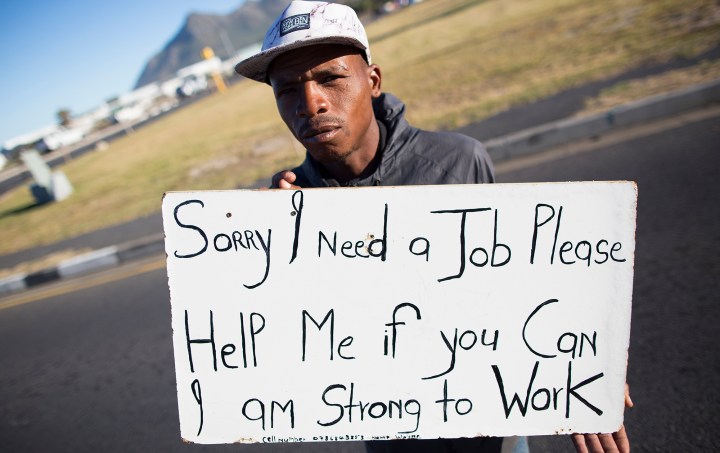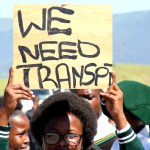OP-ED
It’s a continuing crisis, not a recovery – a reflection on the NIDS-CRAM survey results

You don’t get better labour market economists in South Africa than the NIDS-CRAM team, but the main finding of an ‘employment bounce-back’ seems counterintuitive.
There has been widespread reporting on a “jobs bounce-back” and “recovery” in October 2020 based on the results of the NIDS-CRAM household survey. We should approach this with caution — it is neither quite what the results show nor the story they tell.
What the NIDS data show
The headline figure that the study coordinators cite is that roughly 700,000 jobs in South Africa were shed between February and October 2020 — a 3.85% fall (broad definition). Under any circumstances, this is a massive hit to the labour market. Employment only approaches pre-Covid levels if we contrast this to the cataclysmic employment crash we saw in the first half of 2020. And the authors of the employment paper say, the fall could be as high as 5.3%, which works out to 960,000 jobs.
We also know that October employment is normally higher than February employment. Roughly speaking, we could reasonably expect that without the Covid-19 pandemic and associated lockdowns, 360,000 jobs would have been gained between February and October 2020.
This would mean — within the study parameters — it is possible Covid-19 has caused up to (an outer limit of) 1.32 million job losses when comparing October 2020 with what we would have expected employment to be in normal times.
This is roughly what we expect from the Stats SA quarterly labour force survey, due out later this month. Earlier quarters of this data showed 2.2 million jobs lost in the first half of 2020, and 543,000 regained between July and September 2020, meaning a loss of just under 1.7 million jobs in the first nine months of 2020. We should expect some more jobs regained in the last quarter.
This upper limit of 1.32 million job losses represents a 7.3% gap between what we would have expected in October 2020 and what we actually got. Looked at this way, it may help better explain the devastating findings of increased hunger.
How this compares
Employment losses in the upper half of the 3.9-7.3% range seem congruent with what else we know about the economy.
The International Monetary Fund has projected a 7.5% fall in GDP in SA in 2020. The South African Reserve Bank reported third-quarter output as 5.5% below pre-crisis levels. Generally, GDP and employment track each other, with employment growth trailing output growth.
Comparing October 2020 and 2019 sectoral data, we see that retail sales are down 2.3% and wholesale sales down 4.6%. As we know, tourism plummeted, with income for tourist accommodation falling by 66%. Similarly, food and beverage income was down 39%. These sectors accounted for a large share of the original job losses.
Manufacturing tells a similar story. Between October 2019 and October 2020, the volume of manufacturing production fell 3.9%, capacity utilisation was down, and freight transport dropped by 8.7%. Similarly, mining — a sector that was able to operate, in part, during most of lockdown — was also hit, with mining production down 5.9%.
The upper half of this 3.9-7.3% and 700,000-1.32 million range also much more closely matches the rest of the world. There is no reason to believe that the moribund South African economy would have bounced back more than elsewhere.
What story does this tell?
The story of 700,000-1.32 million fewer jobs is not a story of recovery, even if during the strictest lockdowns the economy shed double or quadruple this amount.
Of course, people have gone back to work as we moved from levels 5 to 1. But this is what should worry us. By October 2020 we had basically fully reopened the economy. And yet we sat with possibly around one million fewer jobs.
We must also consider which jobs they are. The fact that many of the jobs gained were not regained by the same people who lost them originally, may support Antony Altbeker’s hypothesis, that we could be seeing desperate family members taking up worse quality jobs in place of better quality jobs lost by previous breadwinners.
This is an entrenchment of the crisis, not its easing.
Creating jobs is very difficult, and the last thing the South African economy needs is a lower base upon which to build. This is why we argued so strongly that we need to do everything in our power to keep businesses open and people in employment — something the supposed R500-billion rescue package has failed to do.
If — with the economy largely open — we have “settled” at a lower employment level, even if that level is not as dramatic as under total lockdown, this is a disaster. If a milder version of the crisis becomes the status quo, we are in deep, deep trouble.
And this is without considering the lockdowns which followed after this data was collected
It would therefore be extremely irresponsible to interpret the NIDS-CRAM data to be showing the economy is rebounding. Rather, it should terrify us. And we should act accordingly — by scaling up our relief measures and strengthening our recovery plans. DM
Dr Gilad Isaacs is the director of the Institute for Economic Justice; follow him on Twitter @giladisaacs


















 Become an Insider
Become an Insider
Comments - Please login in order to comment.